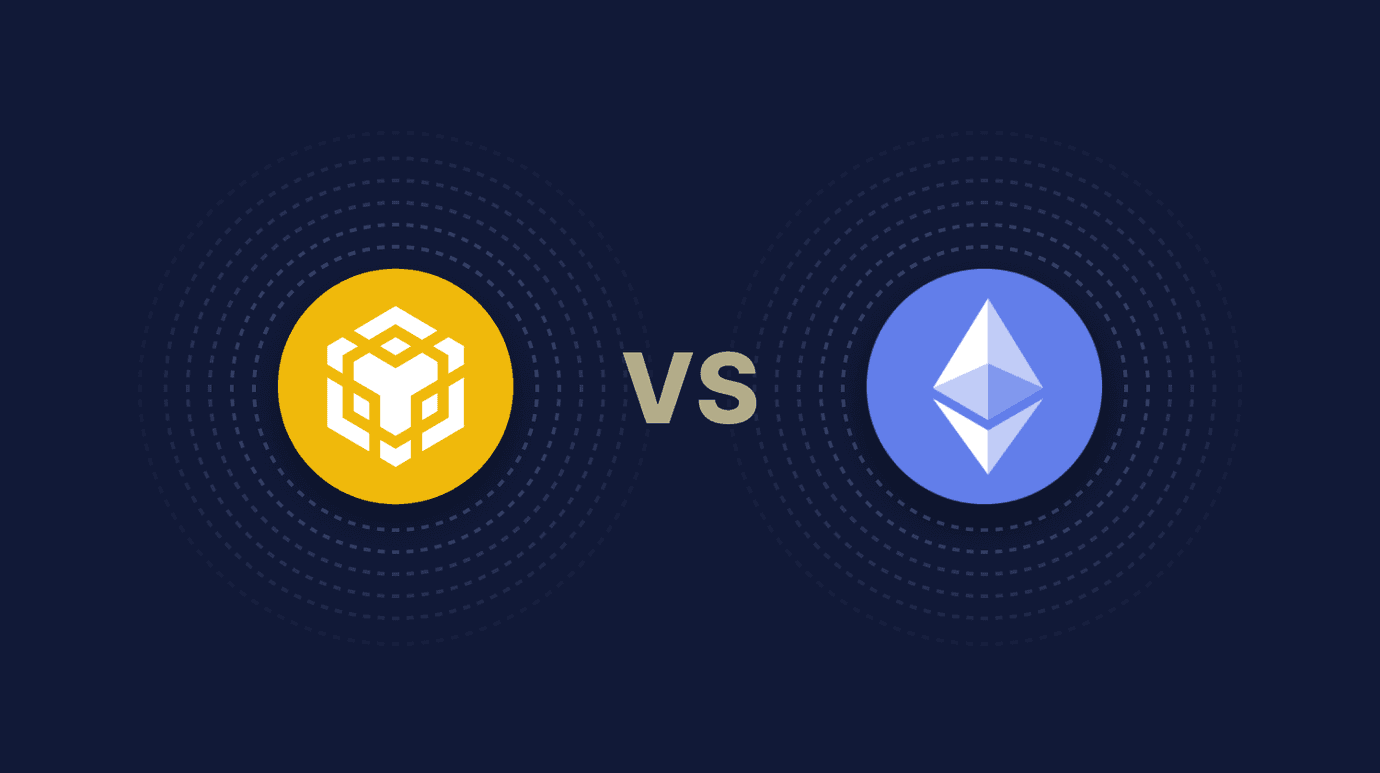Ethereum vs. BNB Chain: Analyzing Token Ecosystems

Explore the Ethereum and BNB Chain networks, compare user base, engagement, tokens ecosystem, and more in this CoinBrain's deep dive analysis.
It’s been 2 years since the BNB Chain launch and more than 7 years since the launch of Ethereum. Both popular EVM blockchains are bringing the power of smart contracts to hundreds of thousands of users.
There has been a lot written about the technical specifics of these 2 solutions, but not so much about their network engagement and community traction. In CoinBrain, we’re analyzing all DEx trades on both BNB and Ethereum blockchains so we’ve decided to deep dive into our data and make a short analysis.
User Base & Engagement
Let’s first take a look at the user base of both chains. Despite the current climate and negative events of the past weeks, we can see the continuous growth of unique addresses on both chains. As of November 2022, we can see approx 20% growth in the number of Ethereum addresses to 212M and almost 90% growth of unique BNB Chain addresses to a total number of 221M. In fact, in October 2022, BNB Chain surpassed Ethereum for the first time in history in the number of unique addresses.
Number of unique addresses on Ethereum and BNB Chain
When we take a look at the percentage of active wallets, we can see that BNB Chain is (with its 0.5% of active addresses) at the moment approx 2x more active than Ethereum with 0.2% of active addresses. It is, however, a significant drop compared to the same period last year when we saw on average 1.4% of active addresses on daily basis.
This decline in active BNB chain addresses is most likely caused by the ongoing bear market and the decrease in the high-profit opportunities related to the altcoin explosion in the middle of 2021. The vast majority of newly created tokens at that time originated on BNB Chain due to its low fees and support by Binance. Ethereum, on the other hand, is retaining more or less the same percentage of active addresses as it had a year ago.
Share of active addresses on Ethereum and BNB Chain
Similarly, we can see a significant drop in the number of transactions made on the BNB Chain in the past year. From about 15M transactions per day in November 2021, the network activity dropped by 78% to the current 3.5M transactions per day in November 2022. Even though, BNB Chain is remaining 3.5x more active than Ethereum with about 1M transactions per day. Unlike BNB Chain, we can see only a slight decline (20%) in daily transactions on Ethereum.
Daily number of transactions per chain
Tokens Ecosystem
But what is actually driving this network activity and engagement? We could get some idea by looking at the tokens — assets built on top of the given blockchain. Both Ethereum and BNB Chain are EVM-compatible chains which means that they can execute smart contracts and computes the state of the network after each new block is added to the chain. This unlocks a huge opportunity for various kinds of dApps (decentralized Apps) with their own tokens and ecosystems.
At the moment of writing this article, we have more than 3 million tokens in our database. 402 thousand of them living on Ethereum and 2.6M of them on BNB Chain.
Just a reminder, CoinBrain is a blockchain scanner indexing all existing tokens and their trading activities similar way as Google is indexing all websites on the internet. Our system can spot a new token within a few seconds after it’s created.
Number of existing tokens on Ethereum and BNB Chain
For the purpose of the upcoming section, we have analysed approximately 2 548 top tokens which are meeting the criteria for the market cap size, trading activity and liquidity. 543 of them on the Ethereum chain and 2007 on BNB chain coins.
Looking at these coins, we’ve found out that despite 5x higher trading activity on the BNB chain, Ethereum coins have on average 10x higher daily trading volume. It means that even though the BNB chain attracts more traders, the wealthier ones concentrate on Ethereum Chain.
This is probably caused by way higher transaction fees which makes the trading expensive unless your budget is high enough.
Number of trades vs trading volume per chain
The low transaction costs on BNB Chain are also coming in handy for the token creators. In fact, there are several times more tokens created on daily bases on the BNB Chain (average of 1488 per day), than on the Ethereum Chain (average of 164 per day) in the past year.
We noticed one more interesting pattern on Ethereum coins — they have in general larger liquidity on DEX. The average liquidity for the top BNB chain coins was $5.61M while on BNB Chain, it is only $1.14M. In the case of larger trades, this level of liquidity might be problematic.
Number of coins created daily per chain
However, don’t get confused by these whopping numbers. Based on our data, approx 50% of tokens are active for only 1 day, around 70% of tokens “die” within 1 week and almost 80% of them within 1 month. That should be a big red exclamation mark for anybody who’s trying to find the new Bitcoin among newly created tokens.
Average live expectancy of a token on Ethereum and BNB Chains
For luck, not all tokens die in a matter of days. Some of them bring real value to their users and are here to stay. These are the top 10 projects from both chains based on Market Capitalization:
TOP10 tokens per chain
In both cases we can see that the TOP10 is dominated by stablecoins, native chain tokens and major projects.
Conclusion
In conclusion, Ethereum and BNB Chain remain two of the most popular EVM-compatible blockchains with their own features, advantages and disadvantages. Ethereum is still the leader in terms of daily trading volume and liquidity. BNB Chain is more attractive for traders who’re looking for lower fees and opportunities related to a large number of emerging tokens.
Both chains have grown in terms of user base in the past year, but the level of engagement is dropping. This could be attributed to the current bear market, but the future will tell if it’s just a temporary phase or a sign of a longer-term trend.


